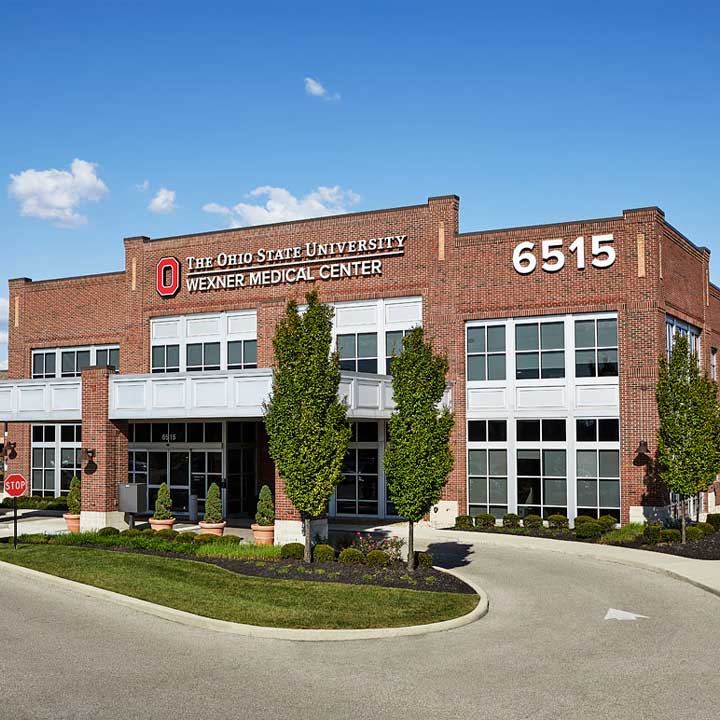 Hip issues can be problematic and interfere with daily living, and they can affect anyone. If you have ongoing hip concerns, your doctor may recommend a hip arthroscopy to diagnose and treat related problems. Orthopedic hip experts at The Ohio State University Wexner Medical Center regularly perform this procedure to help minimize the impact hip issues can have on people’s quality of life. With hip arthroscopy, our providers will help you so that you feel better and can live more comfortably.
Hip issues can be problematic and interfere with daily living, and they can affect anyone. If you have ongoing hip concerns, your doctor may recommend a hip arthroscopy to diagnose and treat related problems. Orthopedic hip experts at The Ohio State University Wexner Medical Center regularly perform this procedure to help minimize the impact hip issues can have on people’s quality of life. With hip arthroscopy, our providers will help you so that you feel better and can live more comfortably.
What is hip arthroscopy?
Hip arthroscopy is a minimally invasive surgical procedure that can diagnose and treat many problems in the hip.
During the procedure, a surgeon uses an arthroscope (sometimes called a hip scope or scope) to examine the hip joint and surrounding tissues. An arthroscope is a special surgical instrument equipped with a camera and light source, which allows the surgeon to view the hip.
Initially, the surgeon will make small incisions in the upper part of the thigh. The surgeon guides the arthroscope into the hip joint to look for signs of damage. The camera on the arthroscope allows the surgeon to see any affected areas, and then the surgeon can repair the tissues at the same time. The procedure is usually performed on an outpatient basis and patients go home the same day.
What does hip arthroscopy treat?
Hip arthroscopy can help fix many problems inside your hip joint that cause pain or difficulty moving.
The procedure can treat a variety of hip conditions, including:
- Hip impingement (called femoroacetabular impingement)
- This occurs when the hip bones don’t align, causing pain and restricted movement. It can result in hip arthritis over time.
- Labral tear
- A labral tear in the hip is when the ring of cartilage around the hip joint becomes damaged, causing pain and movement problems. This can also be part of impingement.
- Cartilage and bone damage
- The hip joint is made up of cartilage and bone. If there is damage or the area contains loose fragments of bone, the surgeon can repair or remove anything damaging to the joint. This can help increase mobility and decrease pain.
- Gluteal tendon repair or release of the gluteal tendons
- Your gluteal tendons connect your muscles to several bones around your hip and thigh area. Sometimes, these tendons can be damaged and require repair. Repair can help you move the joint with reduced pain.
Hip arthroscopy helps fix these problems in the hip, making it easier for you to move without pain.
What to expect with hip arthroscopy
In hip arthroscopy, anchors and sutures may be utilized to help support torn or damaged labral tissue. Microfracture treatment may also be performed to repair areas of cartilage damage. This involves making small holes in the bone below the cartilage to help new cartilage grow.
Areas of bone impingement (when bones rub together) on the ball or socket joints are carefully removed with a high-speed burr to improve joint mobility and reduce the chance of further damage.
This procedure usually takes approximately two hours depending on a variety of factors. You can typically return home on the day of surgery. After the surgery, you may have some pain, swelling or bruising in the surgical area. These effects are common and should decrease with time. Your doctors will provide you with postoperative instructions for pain medication management and general care.
How long does it take to recover from hip arthroscopic surgery?
You’ll typically need to use crutches for about four weeks after surgery. Therefore, you’ll be unable to drive for a period of time, and how long will depend on which leg has surgery and how well you recover.
Following surgery, your surgeon will request that you undergo physical therapy. Physical therapy helps you regain strength and movement in your hip after surgery.
For some people, surgery may be more complex. Therefore, recovery times can vary for each person. However, most people resume normal walking within four to six weeks. You should expect not to be able to put any weight on the affected hip for several days following surgery. Your care team will determine when it’s OK for you to do so.
If you have specific questions about your surgery and recovery, be sure to talk to your doctor.
Why choose Ohio State for hip arthroscopy?
The Ohio State Wexner Medical Center offers some of the best care in Columbus, Ohio, for the diagnosis and treatment of hip-related conditions.
Our integrated hip team includes surgeons, sport medicine physicians, physical therapists, clinic staff, administrative staff and a research team who specialize in hip injuries and treatments.
The team uses leading-edge treatments and includes subspecialty-trained surgeons who have completed two fellowships for specific treatment of hip problems.
If treated at the Ohio State Wexner Medical Center, you might have the unique opportunity to receive new, novel treatments, such as orthobiologics therapies, and to participate in clinical trials of newly developed therapies.

 Hip issues
Hip issues


